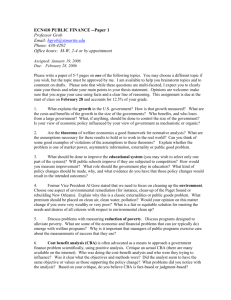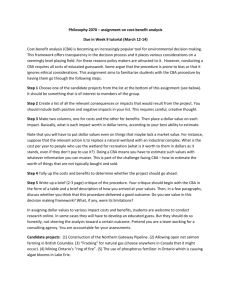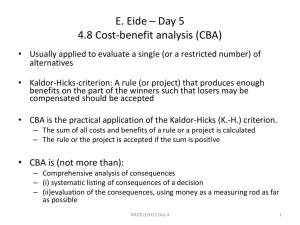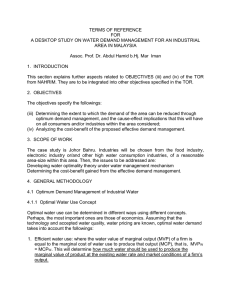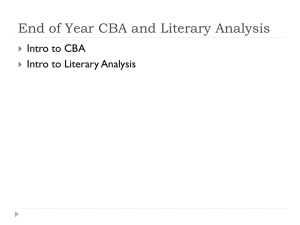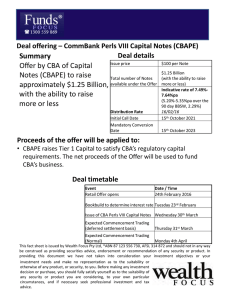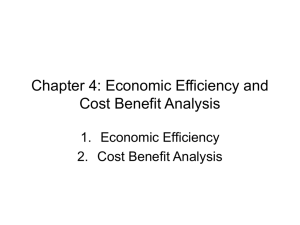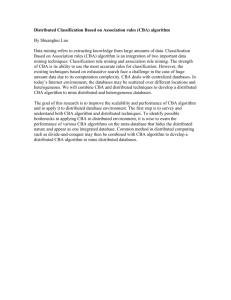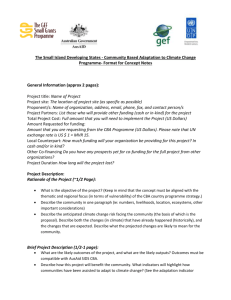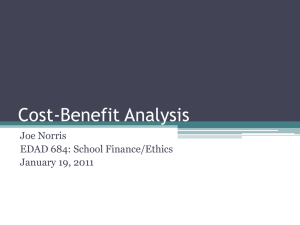Document
advertisement
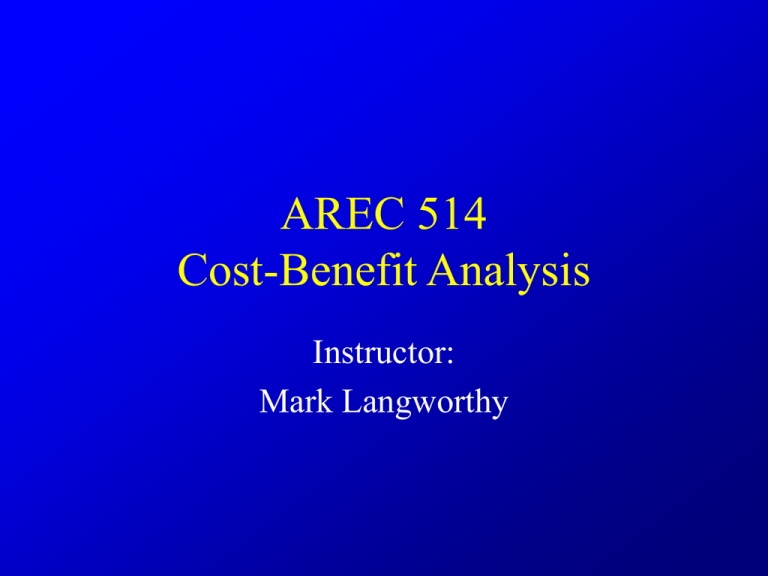
AREC 514 Cost-Benefit Analysis Instructor: Mark Langworthy Introduction: Cost Benefit Analyis • Application of economic principles to analyze impacts of public actions: • Investments – What are important characteristics of investments? • Specific, limited time horizon • Large expenses initially provide stream of benefits over time – Traditionally, the most common focus of CBA Introduction: Cost Benefit Analyis • Policies – Examples: • Taxes/subsidies • Regulations – No explicit time frame – Normally characterized by constant flow of costs/benefits over time • Comparison of costs / benefits in one year Market vs Social Costs & Benefits • We are studying “Social” Benefit Cost Analysis • Similar to Market Benefit Cost Analysis undertaken by firms: – Compare benefits with costs, measured in money terms – Need to incorporate and value risk/uncertainty in the analysis • Future prices/market conditions • All other factors that may affect outcomes in the future Market vs Social Costs & Benefits • But, different in important ways: – Social CBA does not always use market prices • Non-marketed goods • Externalities • Non-competitive markets – CBA makes comparisons across individuals or groups So, CBA must decide whose interests count in the calculation (value judgments) • Income distribution impacts • Claims or rights of different individuals or groups Major Steps in CBA 1. 2. 3. 4. 5. 6. 7. 8. 9. Specify alternative projects (or actions) Decide whose benefits and costs count (standing) Catalogue impacts and select measurement indicators (units) Predict the impacts quantitatively over the life of the project Assign money values to all impacts Discount benefits and costs to get present values Compute NPV of each alternative Perform Sensitivity Analysis Make recommendation for action CBA is partly science, partly art • Can be theoretically rigorous about identifying the information needed for CBA • But actually estimating the numbers is often very difficult – Need to make some very strong assumptions • In this course we will discuss both the science and art aspects of CBA. – Hopefully, you will be convinced of the usefulness of the approach, and understand its limitations. Some arguments against CBA • No unambiguous means for assigning “social” values and costs of outcomes. – How to determine value of a non-marketed good? • Question theoretical basis for making welfare comparisons across individuals – No theoretical basis for making comparisons between one person’s benefits and another person’s costs • Many argue that discounting future costs places greater economic burdens on future generations – Concern about very long term environmental impacts Administrative Issues • Class Website http://ag.arizona.edu/classes/arec514/ Username: arec514 Password: bca • Website Provides: – – – – Syllabus Current plus last year’s lectures Chapters from required textbook Additional readings may be posted over the semester Administrative Issues • Required Text – Boardman, Anthony, D. Greenberg, A. Vining, and D. Weimer, Cost-Benefit Analysis, 2nd Edition, Upper Salmon River: Prentice-Hall, 2001. – Chapters available at class website • Additional readings in syllabus are optional, not required Administrative Issues Course Assignments • 2 Mid-term exams ( each worth 20% course grade) February 26 April 2 • Final Exam (20% course grade) May 14, 11:00 AM – 1:00 PM • Rice study report (20% course grade) Due last day of classes (May 5) • Other homework exercise to be assigned during the semester (20% course grade)
